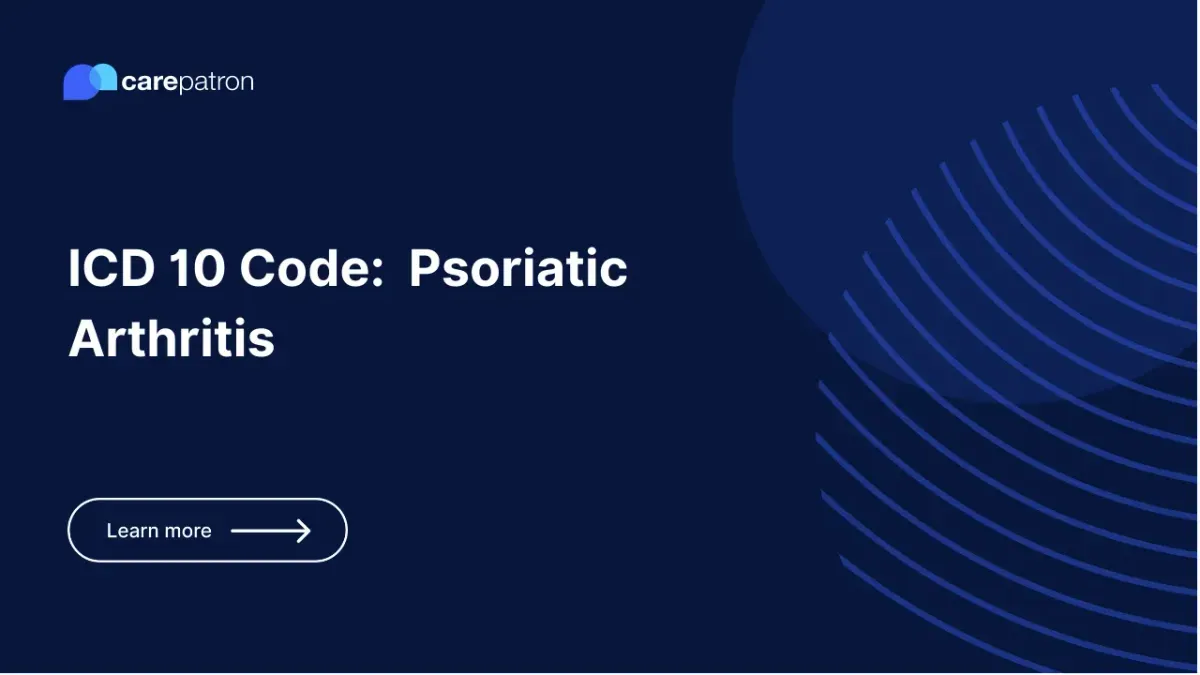
Psoriatic Arthritis ICD-10-CM Codes | 2025
Navigate through the Psoriatic Arthritis ICD-10-CM codes for 2025, and their clinical info, billable codes, synonyms, and FAQs in this comprehensive guide.
Use Code
Commonly asked questions
Yes, psoriatic arthritis is a chronic condition that requires ongoing management to control symptoms and prevent joint damage.
While less common, it is possible to develop psoriatic arthritis without the typical skin psoriasis.
Yes, psoriatic arthritis can affect any joint, though it's more common in the fingers, toes, and spine.
EHR and practice management software
Get started for free
*No credit card required
Free
$0/usd
Unlimited clients
Telehealth
1GB of storage
Client portal text
Automated billing and online payments
